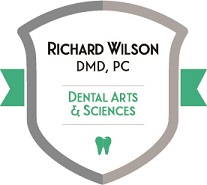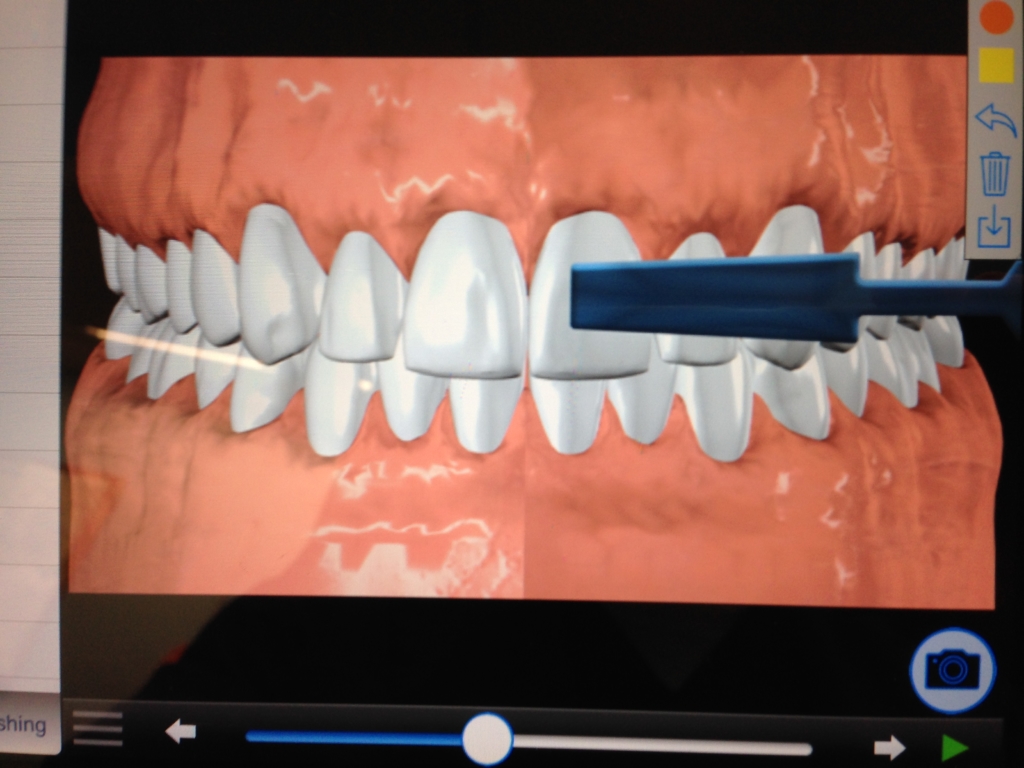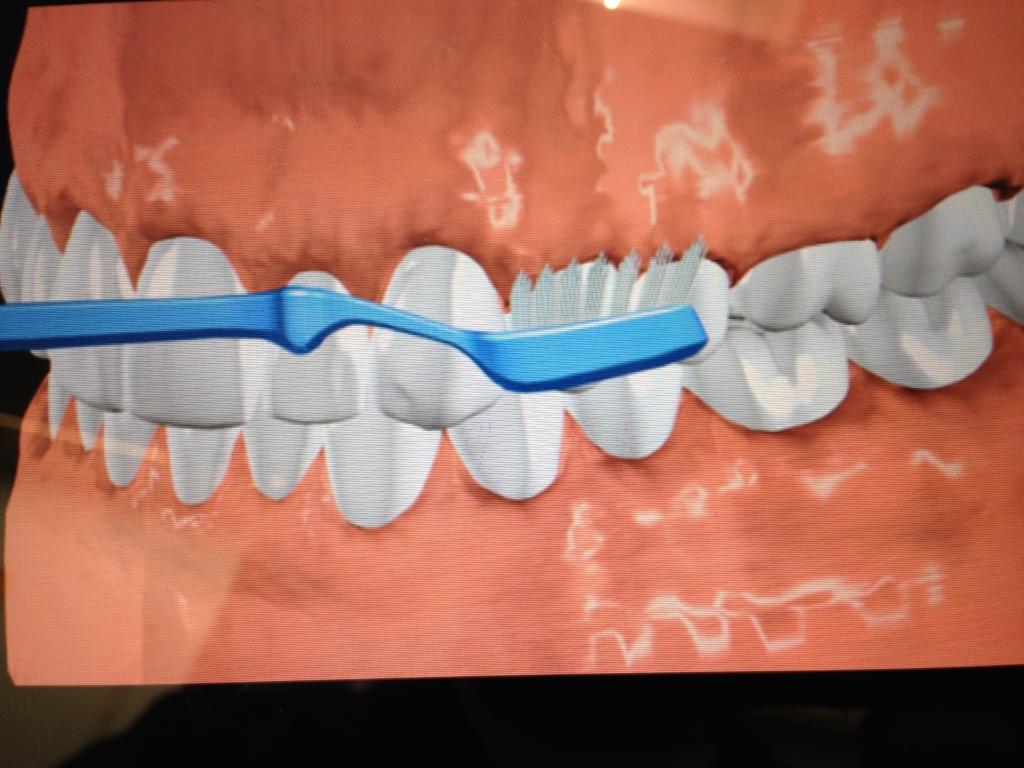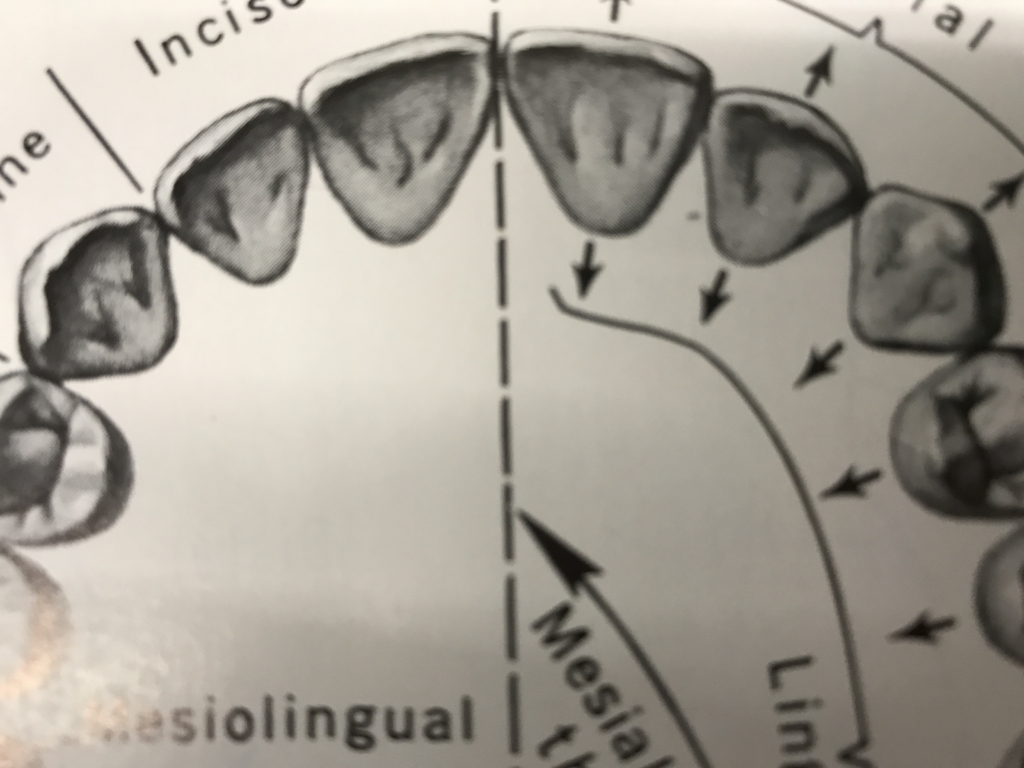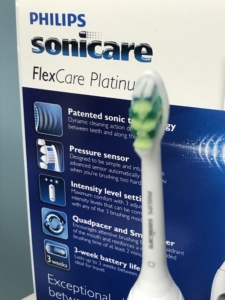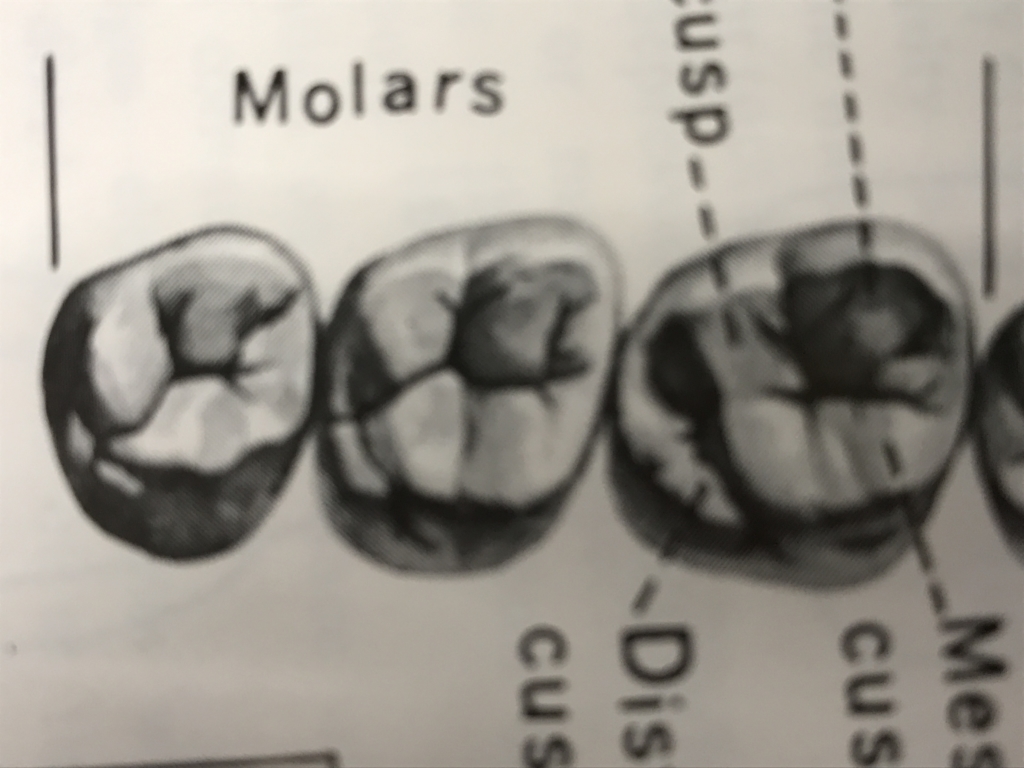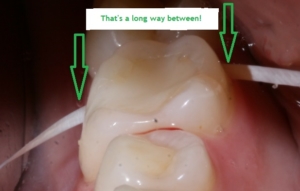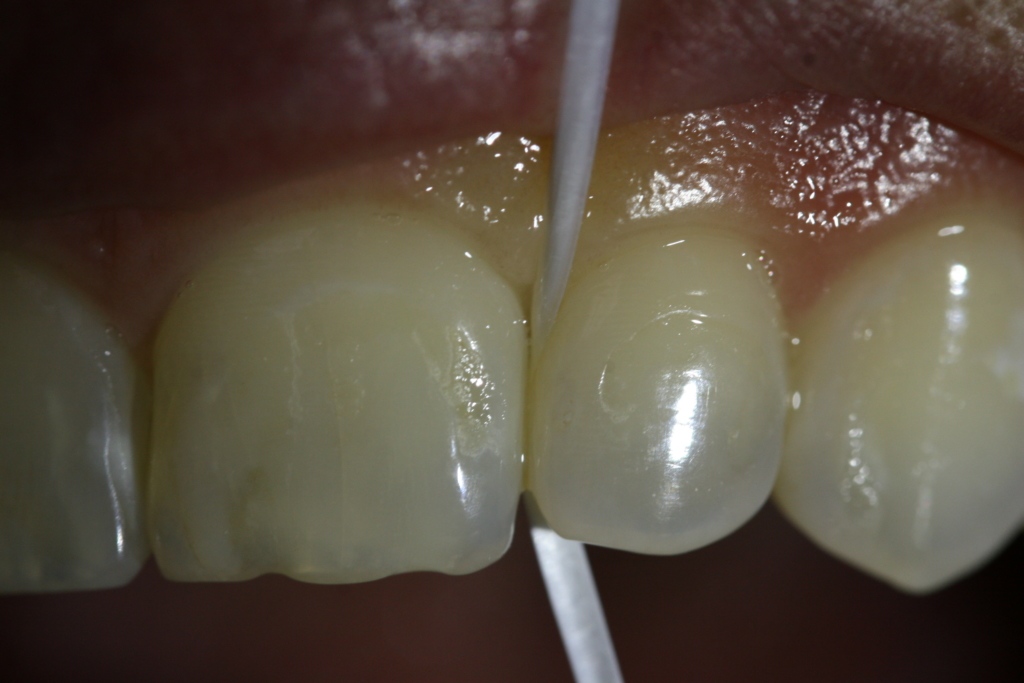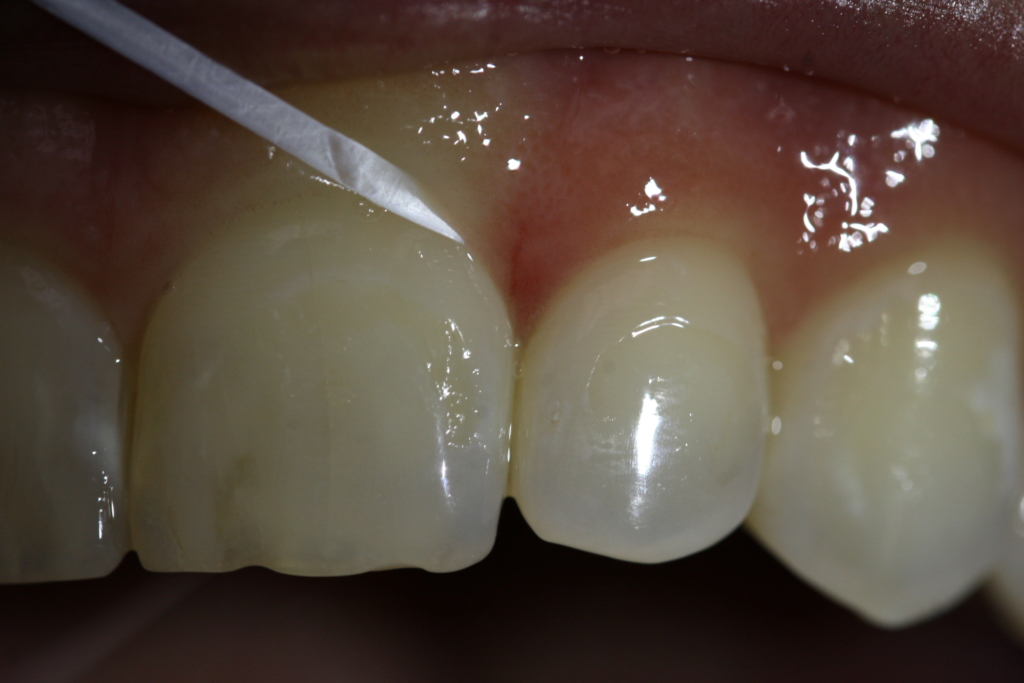How Do I Best Clean My Teeth?
You wouldn’t think this would be such a contentious question. Yet it often elicits the same level of emotional response as something like, “Does trickle-down economics really work?”
Two keys to oral hygiene are brushing effectively and cleaning between the teeth, where the toothbrush cannot reach. The goal is to cleanse away the plaque, the sticky film that constantly builds up on tooth surfaces. As we have seen, the germs in dental plaque are what cause gum disease, as well as cavities.
Many of us brush like this:
Straight on.
There’s nothing wrong with this, it doesn’t do any harm–but the problem is, it misses that all-important delicate collar of gum tissue that protects our underlying jawbone. And that’s where the plaque does its worst.
What we must do is make a simple change and angle the toothbrush into the gums at about a 45-degree angle. Like this:
Voila! We have now effectively cleaned that all-important primary line of defense against germs, the collar of gum tissue that attaches at the neck of each tooth. Our immune system works around the clock in that little area to keep germs at bay. By brushing in this way, we’ve just made its job thousands of times easier. Plus, we’ve reduced the risk of cavities. So much benefit from so little effort!
This technique works with both manual and electric toothbrushes. It is also worth noting that with current tech, electric toothbrushes are much more effective at reducing plaque than manual ones.
So now we come to the more contentious question: Why floss?
Well, in front teeth, if they’re not crowded, a modern electric toothbrush actually stands a decent chance of cleaning plaque away 360 degrees around each tooth. Front teeth, when seen from their edge, are rather thin and a moving, swirling horde of toothbrush bristles can get in between them pretty well.
Back teeth, though–that’s another matter. They are wide from cheek to tongue, thus there are significant sized tunnels between them:
This photograph shows you just how challenging it is to clean between back teeth!
Thus, the hard truth is that something in addition to a toothbrush has to go between our teeth, especially our back teeth, if we are to successfully keep them clean and avoid cavities, gum disease and bad breath. That something can be floss, it can be toothpicks (triangular ones are best), it can be a Proxabrush or it can be SoftPiks. You should feel free to use the method that works best for you–the important thing is, to use one of these methods daily, not to do nothing at all.
One final important point about floss. The shape of the gums between our teeth is normally scalloped; beautiful smiles have gums that rise and fall between each tooth. The shape in between is a triangle.
With floss, it is ineffective, and even slightly harmful, to hit that triangle right in the middle and push upwards:
The proper way to floss is to wrap the floss left and then right, scooting quickly up under the gumline on both the teeth involved. Like this:
The challenging part is doing this for the back teeth too. But it’s worth it. The rapid left-right motion to both sides of the triangle cleans what needs to be cleaned, and causes no trauma at all.
Until we have robots built into our medicine chests that do all this for us–as well as shave, take off makeup, and so on–it’s up to us to keep our smiles clean and healthy in an analog world. It takes some effort–but once you get used to it, it’s not hard at all.
*****
On our next page, we will move on to examine the reasons why so many of us have crowded teeth, and why orthodontists exist.
http://www.smilephiladelphian.com/orthodontics-beauty-and-health/
